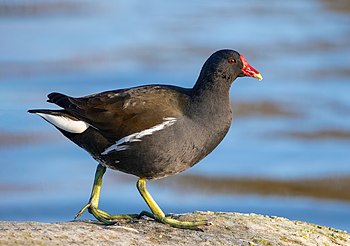User:Gulmammad
| This user has rollback rights on the English Wikipedia. (verify) |
| This user has autoreview rights on the English Wikipedia. (verify) |
| This user has reviewer rights on the English Wikipedia. (verify) |
| This user has made thousands of contributions to Wikipedia. |
Contributions
• Sokolov-Ternov effect
• Hamilton's principal function
• Hamilton's characteristic function
• Experimental observation of Hawking radiation
• Particle number operator*
• Self-organization in biology*
• Aleksandr Chudakov
• Alexey Andreevich
• A. P. Balachandran
• Igor Ternov
• Mark Trodden
• Stanislav Mikheyev
• Alexei Smirnov*
• Shamil Asgarov
• Seifallah Randjbar-Daemi
• Habil Aliyev
• Ahmad Bakikhanov
• Aşık Khanlar
• Suleyman Valiyev
• Heino Finkelmann
• Tom Lubensky
• Lubna al-Hussein
• Sheylanli tribe
• Sheylanli
• Boyat
• Ashaghy Aylis
• Agbash
• International Liquid Crystal Society
• British Liquid Crystal Society
• International Centre for Theoretical Physics*
• ANS Group of Companies
• ANS TV
• ANS ChM
• Khudafarin Bridges
• Azerbaijan Time
• Yemen Türküsü
• Jujalarim
• Föppl–von Kármán equations
- * Didn't create but significantly contributed
The common moorhen (Gallinula chloropus) is a bird species in the rail family, Rallidae. It is distributed across many parts of the Old World, from Africa to Europe and Asia. It lives around well-vegetated marshes, ponds, canals and other wetlands. A midsized to large rail, the common moorhen ranges in length from 30 to 38 cm (12 to 15 in) in length and spans 50 to 62 cm (20 to 24 in) across the wings. It gives a wide range of gargling calls and will emit loud hisses when threatened. This common moorhen was photographed in the Parc des Chanteraines near Gennevilliers in the suburbs of Paris, France.
Photograph credit: Alexis Lours
Today's featured article
The siege of Guînes took place from May to July 1352 when a French army under Geoffrey de Charny unsuccessfully attempted to recapture the French castle (pictured) at Guînes which had been seized by the English the previous January. The siege was part of the Hundred Years' War and took place during the uneasy and ill-kept truce of Calais. The strongly fortified castle had been taken by the English during a period of nominal truce and the English king, Edward III, decided to keep it. Charny led 4,500 men and retook the town but was unable to either recapture or blockade the castle. After two months of fierce fighting, a large English night attack on the French camp inflicted a heavy defeat and the French withdrew. Guînes was incorporated into the Pale of Calais. The threat posed by this enclave caused the French to garrison 60 fortified positions around it, at ruinous expense. The castle was besieged by the French in 1436 and 1514, but was relieved each time, before falling to the French in 1558. (Full article...)


